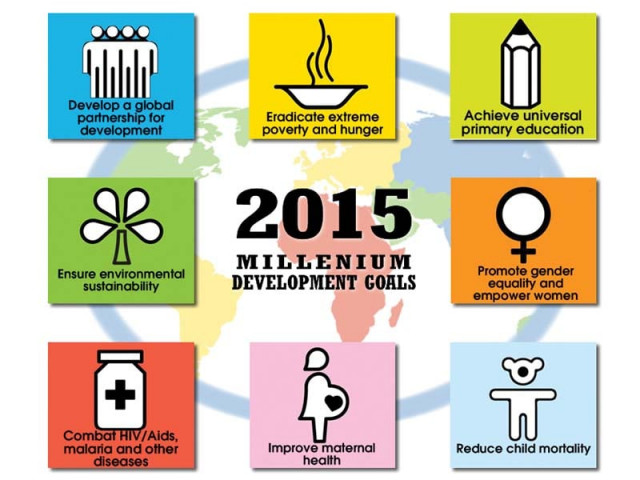Pakistan struggles to meet Millennium Development Goals
The close link between family planning and economic success.

The world celebrated World Population Day on July 11. The London Summit on family planning launched the unprecedented initiative to meet the demand for modern family planning in developing nations with an aim to seek more funding through legislation while pushing governments across the globe to commit more funds and budgets to this cause. The cost is around $4.1 billion per year. The aim is to give 120 million more women access to better family planning by 2020.
Pakistan is the sixth most populous country in the world with a population of around 173 million people. The growing trend of 35% annually can take the tally to mammoth proportions by 2020. Understanding and awareness of long-term impacts to the people of the country remain unknown to policymakers as ignorance and oblivion remains adamant.
By 2050, Pakistan is expected to have around 309 million people, much higher than US with 239 million, Iran with 100 million, Turkey with 99 million, Bangladesh with 258 million, Russia with 109 million. China and India are predicted to be at an astounding 1.4 billion and 1.6 billion respectively. If we look at the geographic size of most countries here, the comparative allocation of budgetary support given to health assurance is far higher and superior elsewhere than in our country, leaving just India behind. In a country with one of the higher population numbers and one of the lowest healthcare percentages in the region, it is imperative to find new ways to improve general and reproductive healthcare, review the government healthcare regulations for amendments, increase the annual budget contribution to the health sector and control the population numbers as the world grows smaller every passing day and less healthier. Surprisingly, the recent budget allocation to health has not addressed this issue adequately.
More interesting is the 2005-2050 world survey analysis, where it is indicated that Pakistan is one of the nine developing nations where projected growth in population will surpass half the world’s projected population increase.
According to a World Bank report in 2006, 22.6 % of population in Pakistan lives below the poverty line, earning less than $1.25 a day. These numbers have risen since then, especially after the recent floods of 2010, raising living costs and creating massive displacements of populations within most affected parts of the country. Adding to that, the massive inflation has further burdened people already affected by rising health issues, diseases and infections, after the post- rain hit impact analysis.
Sadly, we are far from reaching the millennium development goals as over 45% of the population has limited or no access to any form of healthcare. Low priced, better quality healthcare is required to sustain us, as private sector needs to further contribute efforts towards helping people live, in order to eventually create a future healthy population numbers that can contribute to the country , both socially , economically and financially in the long run.
The government must do more to address this menace by conducting strict quality and safety checks over private and government hospitals, ensuring adherence to 100% infection prevention across medical health facilities by rewarding people for their contributions and reprimanding people for negligence.
There is a greater link between family planning and economic success than we have come to know.
“Demographic analysis can help governments target investments to meet the needs of current and future generations,” says the UNFPA report on Population Dynamics in the Least Developed Countries: Challenges and Opportunities for Development and Poverty Reduction. Investments in infrastructure and employment will yield high returns if they are matched by investments in education, skills and health. Fulfilling the unmet need for modern family planning in developing countries would cost $3.6 billion annually, but the latest data available in 2011 showed that this investment would actually lower the cost of maternal and newborn health services by $5.1 billion, resulting in a net total savings of$1.5 billion.
For Pakistan, investing in voluntary family planning today would not only pay dividends now, but would also help the next working generation of young people enjoy opportunities and forge a brighter future.
THE WRITER IS A BANKER AND BROADCASTER FOR FM91
Published in The Express Tribune, July 23rd, 2012.



















COMMENTS
Comments are moderated and generally will be posted if they are on-topic and not abusive.
For more information, please see our Comments FAQ